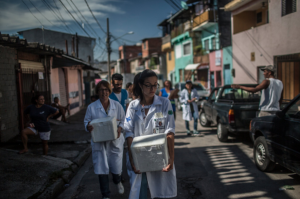Today, we started out by reflecting on I.S symposium. There were a lot of good presentations that people went to, and it was good to hear that people were able to experience I.S presentations inside and outside their majors. The bulk of the class discussion revolved around the reading of two chapters from, Living with Insecurity in a Brazilian Favela, by Ben Penglase.
Discussion of Reading + Main Questions:
Drug Trafficking discussion: Who is receiving the profits? what effect are they having on the community? Drugs more often than not can become a “stand-in” for something else (race, class, gender) easy way to attack certain communities.
Q1: What was the author’s goal?
A: To provide and perhaps stoke a further conversation about people who live in the favelas
Q2: What about the question of violence?
A: Violence, just like any other issue is deeply complex. It can extensively shape a community and become a part of the day to day life. Just because individual lives in an area that is consumed by violence, does not mean that they or the rest of their community is inherently violent.
Differences between what was described in the article vs the documentary “Wasteland”
The sense of pride exuded in Wasteland was big difference identified by the class. Those who were interviewed saw drug dealing and prostitution as “caving in” and that even though they knew they stunk and weren’t making money, there was some pride in the fact that they were doing “honest” work.Penglase is less performative than Vik was in the documentary. Penglase is more invested in the actual people and their conditions, more than Vik appeared to be.
Major Themes:
Police/Drug Trafficking/ Police Tactics/
Customs, culture, attitude: race + social class (interpersonal relationships)
Penglase’s Overall Research Question: What are the sources of insecurity in the favela? (Religiosity Masculinity)
Term: Religiosity Masculinity: Refer’s to how men in the favelas have to constantly try to find ways to hold onto their masculinity, particularly when police invade their homes, which is considered highly disrespectful for men specifically, due to the prevalent link between a man’s honor and his control over his home.
Concluding Thoughts: What I thought was really interesting was how at the end we could relate what is going on in Brazil to similar problems that exist in the United States, particularly our discussion about ways one can “move up the social latter” in the United States.
Additionally Sources:
Here is a link to a review written by Erika Robb Larkins on the book
Below is a link detailing a recent crime wave in Rio, I think it’s worth to look at the language being used to describe what is currently going on
https://www.npr.org/sections/parallels/2018/02/26/588013619/the-racket-in-brazil-gangs-are-blowing-up-banks-for-cash


